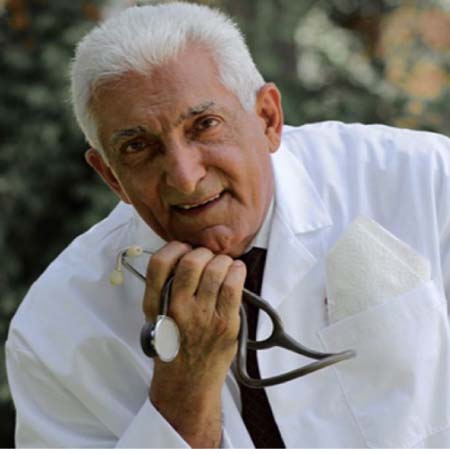
World AIDS Day on 1st December brings together people from around the world to raise awareness about HIV/AIDS and demonstrate international solidarity in the face of the pandemic.
The day is an opportunity for public and private partners to spread awareness about the status of the pandemic and encourage progress in HIV/AIDS prevention, treatment and care in high prevalence countries and around the world.
Between 2011 and 2015, World AIDS Days will have the theme of “Getting to zero: zero new HIV infections. Zero discrimination. Zero AIDS related deaths”. The World AIDS Campaign focus on “Zero AIDS related deaths” signifies a push towards greater access to treatment for all.
Every year, 1 December is commemorated as the World AIDS Day. People and communities around the world dedicate the day to activities and events to cherish the memories of those who battled with the disease, and to celebrate progress achieved in the global response to HIV.
The WHO HIV programme will join partners across the world in marking the World AIDS Day 2012 and highlight key challenges and opportunities in implementing the Global Health Sector Strategy on HIV/AIDS.
Our health adviser and a senior lecturer at UTG who is also a senior consultant in Obstetrics & Genecology is taking this particular opportunity to focus and advice on the importance of prevention of HIV/ADIS, transmission of HIV-virus from mother to her unborn baby and transmission of the virus during breast-feeding period.
What actually does HIV/ADIS means
The human immunodeficiency virus (HIV) is a retrovirus that infects cells of the immune system, destroying or impairing their function. As the infection progresses, the immune system becomes weaker, and the person becomes more susceptible to infections. The most advanced stage of HIV infection is acquired immunodeficiency syndrome (AIDS). It can take 10-15 years for an HIV-infected person to develop AIDS; antiretroviral drugs can slow down the process even further.
HIV is transmitted through unprotected sexual intercourse, transfusion of contaminated blood, sharing of contaminated needles, and between a mother and her infant during pregnancy, childbirth and breastfeeding.
Key facts
• HIV is one of the world’s leading infectious killers, claiming more than 25 million lives over the past three decades.
• There were approximately 34.2 million people living with HIV in 2011.
•HIV infection can be diagnosed through blood tests detecting presence or absence of antibodies and antigens.
Scope
HIV is one of the world’s leading infectious killers, claiming more than 25 million lives over the last 30 years. In 2011, there were approximately 34.2 million people living with HIV. Over 60% of people living with HIV are in sub-Saharan Africa.
Signs and symptoms
The symptoms of HIV vary depending on the stage of infection. Though people living with HIV tend to be most infectious in the first few months, many are unaware of their status until later stages. The first few weeks after initial infection, individuals may experience no symptoms or a flu-like illness including fever, headache, rash or sore throat.
As the infection progressively weakens the person’s immune system, the individual can develop other signs and symptoms such as swollen lymph nodes, weight loss, fever, diarrhoea and cough. Without treatment, they could also develop severe illnesses such as tuberculosis, meningitis, and cancers among others.
Transmission
HIV can be transmitted via unprotected and close contact with a variety of body fluids of infected individuals, such as blood, breast milk, semen and vaginal secretions.
Individuals cannot become infected through ordinary day-to-day contact such as kissing, hugging, shaking hands, or sharing personal objects, food or water.
Examples of HIV transmission routes include:
• unprotected sex with an HIV- infected partner;
• mother-to-child transmission during pregnancy, childbirth, or breastfeeding;
• transfusion with HIV-infected blood products;
• Sharing of contaminated injection equipment, tattooing, skin-piercing tools and surgical equipment.
Risk factors
Behaviours and conditions that put individuals at greater risk of contracting HIV include:
• having another sexually transmitted infection such as syphilis, herpes, Chlamydia, gonorrhoea, and bacterial;
• sharing contaminated needles, syringes and other infecting equipment and drug solutions for injecting drug use;
• receiving unsafe injections, blood transfusions, medical procedures that involve unsterile cutting or piercing;
• Experiencing accidental needle stick injuries, including among health workers.
Diagnosis
An HIV test reveals infection status by detecting the presence or absence of antibodies to HIV in the blood. Antibodies are produced by individuals’ immune systems to fight off foreign pathogens. Most people have a “window period” of 3 to 12 weeks during which antibodies to HIV are still being produced and are not yet detectable. This early period of infection represents the time of greatest infectivity but transmission can occur during all stages of the infection. Retesting should be done after three months to confirm test results once sufficient time has passed for antibody production in infected individuals.
People must agree to be tested for HIV and appropriate counselling should be provided. HIV test results should be kept confidential, and everyone should receive post-test counselling and follow-up care, treatment and prevention measures as appropriate.
Prevention
Individuals can reduce the risk of HIV infection by limiting exposure to risk factors. Key approaches for HIV prevention include:
Condom use
Correct and consistent use of male and female condoms can protect against the spread of sexually transmitted infections, including HIV. Evidence shows that male latex condoms have an 85% or greater protective effect against the sexual transmission of HIV and other sexually transmitted infections (STIs).
Testing and counselling for HIV and STIs
Testing for HIV and other STIs is strongly advised for all people exposed to any of the risk factors so that they can learn of their own infection status and access necessary prevention and treatment services without delay.
Male circumcision
Male circumcision when safely provided by well-trained health professionals reduces the risk of heterosexually acquired HIV infection in men by approximately 60%. This is a key intervention in generalized epidemics with high HIV prevalence and low male circumcision rates.
Elimination of mother-to-child transmission of HIV
The transmission of HIV from an HIV-positive mother to her child during pregnancy, labour, delivery or breastfeeding is called vertical or mother-to-child transmission (MTCT). In the absence of any interventions transmission rates are between 15-45%. MTCT can be fully prevented if both the mother and the child are provided with antiretroviral drugs throughout the stages when infection could occur.
Harm reduction for injecting drug users
People who inject drugs can take precautions against becoming infected with HIV by using sterile injecting equipment, including needles and syringes, for each injection. A comprehensive package of HIV prevention and treatment, substitution therapy for drug users includes drug dependence treatment, HIV testing and counselling, HIV treatment and care, and access to condoms and management of STIs, tuberculosis and viral hepatitis.
WHO response
Since the beginning of the epidemic, WHO has led the global health sector response to HIV. As a co-sponsor of the Joint United Nations Programme on AIDS (UNAIDS), WHO takes the lead on the priority areas of HIV treatment and care, and HIV/tuberculosis co-infection, and jointly coordinates with UNICEF the work on prevention of mother-to-child transmission of HIV.
For further information call on Government National HIV/AIDS Agency (NAS), every government hospital EFSTH and clinics, MRC and number of NGO and private Clinicnior s, email aqzadehhassan@yahoo.co.uk, text to 002207774469/3774469.
Author DR AZADEH Senior Lecturer at the university of the Gambia Senior Consultant in Obstetrics and Gynaecology. Clinical Director Medicare Health Services




